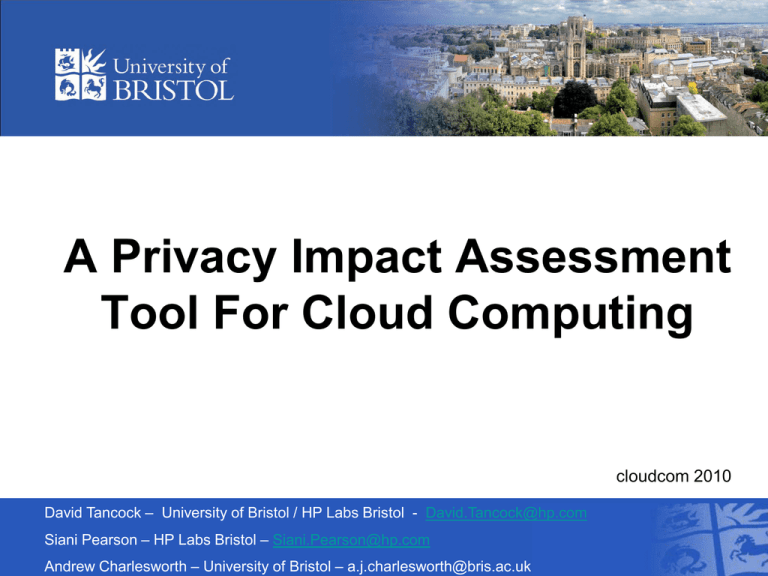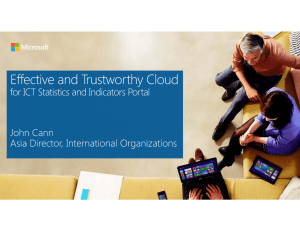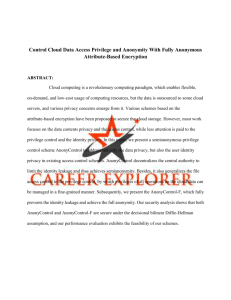A Privacy Impact Assessment Tool For Cloud Computing cloudcom 2010
advertisement

A Privacy Impact Assessment Tool For Cloud Computing cloudcom 2010 David Tancock – University of Bristol / HP Labs Bristol - David.Tancock@hp.com Siani Pearson – HP Labs Bristol – Siani.Pearson@hp.com Andrew Charlesworth – University of Bristol – a.j.charlesworth@bris.ac.uk Introduction The presentation will outline and discuss the following aspects: - Privacy Impact Assessments (PIAs) Privacy and security issues in cloud computing Tool development Alternative approaches Next steps Conclusion Privacy Impact Assessments (PIAs) Definition: “A systematic process for identifying and addressing privacy issues in an information system that considers the future consequences for privacy of a current or proposed action” (Bennett, Bayley, Charlesworth, Clarke. 2007) - Predictive / Proactive exercise Consists of a series of steps Perceived primarily as a management tool Why organisations should conduct a PIA? No agreed international standard Types of PIAs Privacy and Security Issues There are many concerns involving privacy and security within cloud computing including: - Personal Identifiable Information (PII) Theft Misuse or unauthorised resale of personal data Loss of organisational trust by consumers Decrease of privacy rights, obligations and status Conflicting privacy laws from different jurisdictions Tool Development - What the PIA tool addresses? - Tool architecture - Knowledge representation Tool Development - User inputs Example of UK PIA tool - Project Outline form Tool Development - Questions and answers Example of UK PIA tool - PIA Assessment Questions Tool Development - Tool outputs Example of UK PIA tool – PIA Report page 2 Tool Development - Cloud deployment Alternative Approaches - Location register Cloud storage gateway Accountability Obfuscation Hewlett Packard Privacy Advisor (HPPA) (Nasuni, 2010) Alternative Approaches - Privacy by Design Cloud computing architecture for privacy-preserving and usable data outsourcing (A. Cavoukian. 2010) Cloud computing architecture for privacy-preserving, trustworthy, and available data outsourcing (A. Cavoukian. 2010) Next Steps in Development • Analyse further how stakeholder analysis and workflow can be integrated into the tool, and whether there are any aspects of PIAs that cannot be captured by such an approach • Conduct empirical research to obtain the initial set of rules for the KB. • Consider different Artificial Intelligence (AI) methods for the analysis (i.e. the reports and the grading of privacy risks etc.) Next Steps in Development • Choose a cloud storage gateway provider for our tool. This will be measured by the services they provide and the costs that they charge for this service. • Develop the code using Java (i.e. Java Server Pages (JSP), JavaBeans etc.) technologies. This will involve employing a modular approach from the design phase, and includes building the KB. Conclusions We are currently developing a PIA tool that can be used in a cloud environment to identify potential privacy risks and compliance. We believe that this generic approach will prove of increasing benefit as cloud service adoption increases. Q/A





